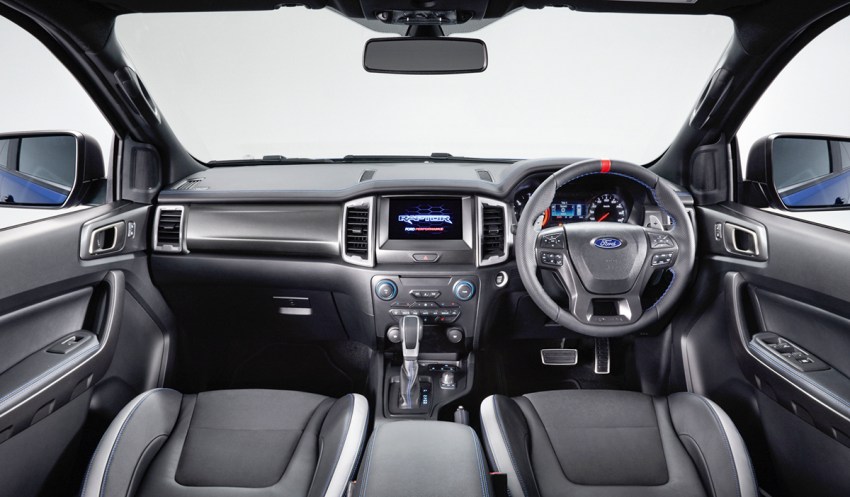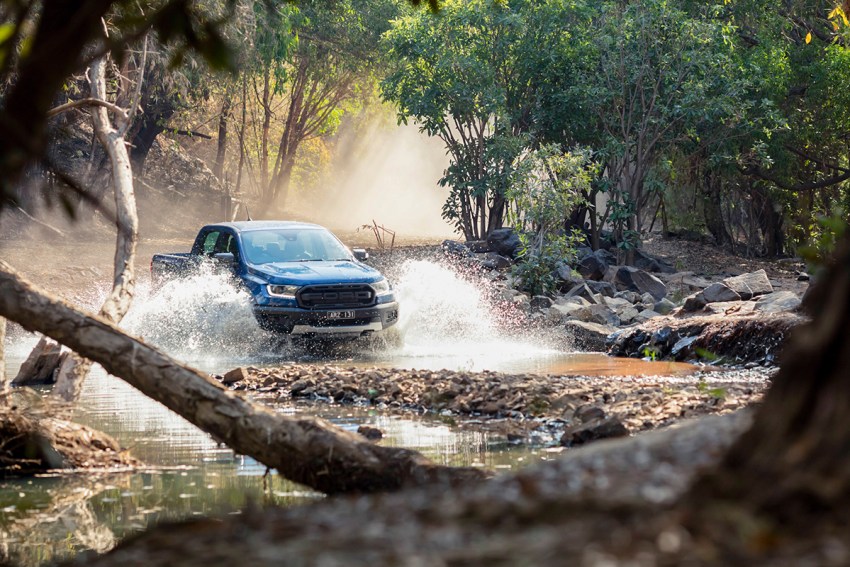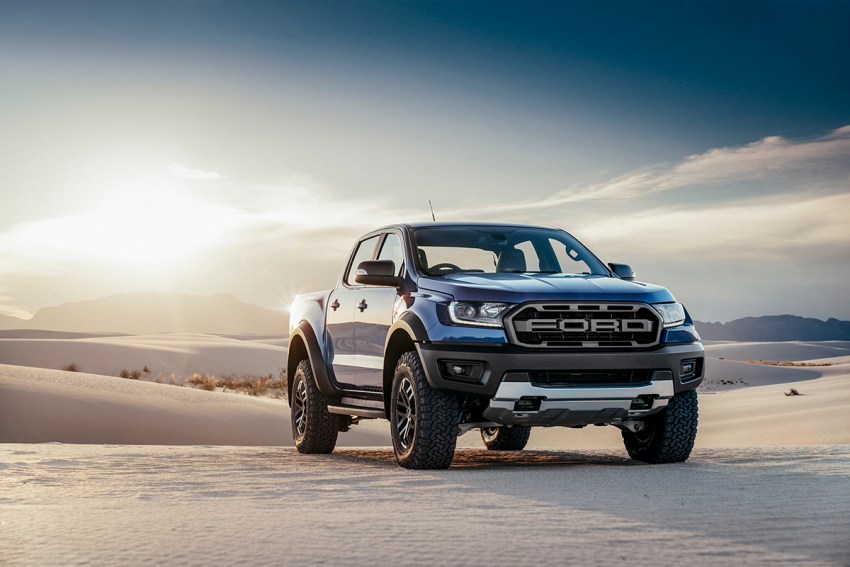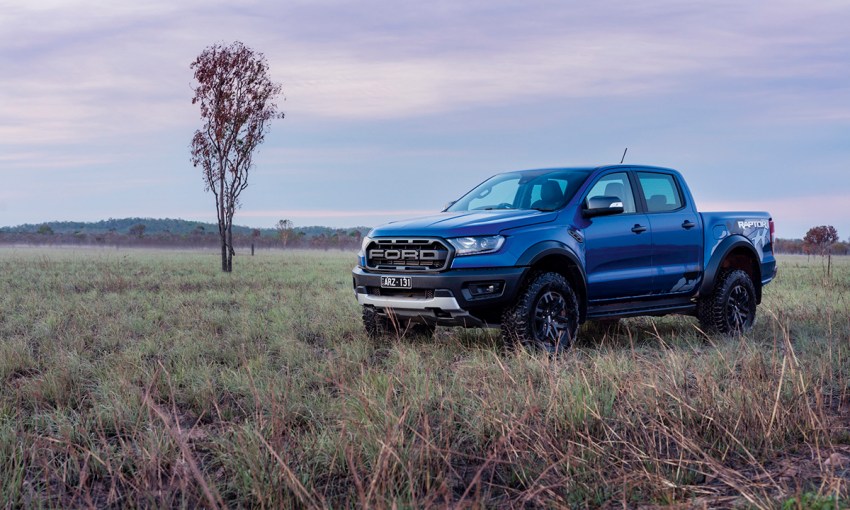Ford’s latest and greatest model in its popular Ranger line up is wildly entertaining off-road. Even if you don’t need one, you probably want one.
Motoring: Bird of prey
Despite sounding like something from the age of dinosaurs, “raptor”, according to my dictionary is a bird of prey, such as an eagle or a hawk. Like most motor vehicle names, it doesn’t really matter what it means, so long as it is memorable, evocative and, of course, unique.
The vehicle it adorns is certainly memorable and, to a considerable extent, unique. The Ford Ranger Raptor is a dual-cab ute, top of the Ranger line-up, and almost certainly a lot more truck than most buyers will ever really need. Not that such a fact will dissuade them from buying it.
The Raptor is a lifestyle choice, as much as a practical decision. To put it into perspective, this jacked-up, blinged-up Ranger on steroids, at $74,990 (plus on-road costs) is $11,000 more than the next-down-the-scale Ranger Wildtrak Biturbo. And a substantial $35,000 more than the unadorned Ranger twin cab entry model.
For all that extra money, you get a seriously tough-looking truck that’s wider and taller. The bumpers, mudguards, grille and wheel arch extensions are all more pronounced. Big black wheels are shod with tyres that look like something the military might specify. Around town, you’d expect the Raptor to be as about at home as an elephant in a supermarket.

But surprisingly, the Raptor is more of a pussycat, albeit a very large pussycat. Despite the aggressive tyre tread pattern, there is almost no tyre roar (although there is a particular speed where they do rumble) and the twin-turbocharged 2.0-litre diesel is quite subdued. And then there’s the ten-speed automatic transmission that shuffles around to ensure you are always operating in the engine’s sweet spot, although it does get a bit flustered in low range, but most drivers will prefer to do their own gear-changing when the going gets a bit challenging, so it isn’t really an issue. And there are four-wheel disc brakes where lesser Rangers make do with drum brakes on the rear.
Apart from negotiating roundabouts that you can’t see from the driver’s seat, and squeezing into parking spaces that seem to be shrinking year on year, the Raptor isn’t too demanding.
Of course, the Raptor was never created with the suburban school run in mind. High-speed off-road shenanigans are its raison d’etre. To that end, it has been given a new coil-over rear suspension using a Watt’s link set-up, solid rear axle, stiffer side rails and long-travel Fox Racing Shox dampers. As befits a serious off-roader, the Raptor gets two-wheel drive mode, four-wheel drive high range mode and four-wheel drive low range modes, plus a rear differential that can be locked in all three drive modes. Ground clearance is a rock-hopping 283mm, so you’ll be appreciative of the black magnesium die-cast side steps and grab handle on the A-pillar.
In other words, the Ford Raptor has the wherewithal to back up the promise.

While on-road ride and handling are well above average for this class, it’s on gravel roads that the Raptor comes into its own. Serious off-roaders will find hours of fun in the various drive modes, ranging from Normal through Sport, grass/gravel/snow and mud/sand, Baja and Rock. Each will adjust traction and stability controls to best suit the demands of the terrain being covered. It even helps you make the right selection. In addition, there are separate buttons for two-wheel drive, and high and low four-wheel drive, rear differential lock and hill descent control.
The Raptor gets plenty of 2.3mm steel underbody plates and panels to protect it from the off-road abuse it revels in, and the diesel particulate filter has been moved higher to lessen the chance of setting dry grass alight.
However, one omission in particular lets the Raptor down. Autonomous emergency braking isn’t available, which makes it surprising that the Raptor scored a five-star ANCAP safety rating. Another whinge is cruise control (not adaptive) that simply won’t hold the big Ford to your set speed on a long downhill run. You can’t even use the big paddle shifters to get the benefit of engine braking because at 110km/h, the lowest ratio it will accept is sixth, and that simply isn’t low enough to hold the speed. And some people will be disappointed that load (down from 900kg to 758kg) and towing (reduced from 3500kg to 2500kg) capacities have been reduced with the new 2-litre engine.
But most buyers will simply jump in and have a ball, on and off-road, while attracting plenty of envious glances. What more can you ask?

Confirm prices with dealer and add statutory on-road costs and dealer delivery.
This story first appeared in the July 2019 issue of SALIFE Magazine.



